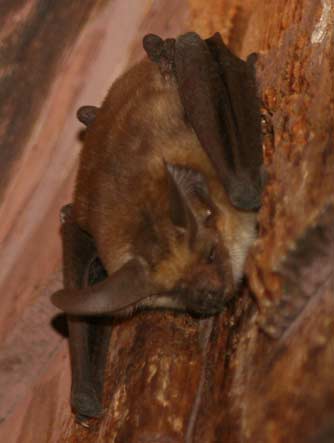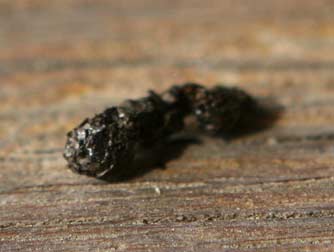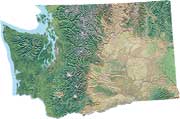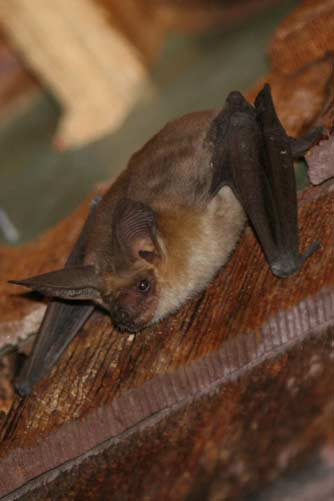Pallid bats live in semi-arid eastern Washington and are most noticeable during the warm summer months when big insects are on the crawl. This is the second largest bat in Washington State and can be find in grasslands, dry shrub and ponderosa pine near water. Should you notice bug parts such as heads, wings, antennae and legs dropped on the ground in favorable locales, you probably have found a pallid bat night roost, where it eats its prey.
Pallid bats don't generally rely on flying insects for food, though they will catch big bugs that fly slow enough, such as some moths and flying beetles. Mainly, they forage for meaty arthropods that crawl on the ground at night such as Jerusalem crickets, other crickets and grasshoppers, lined June beetles, California prionus beetles, praying mantis, the occasional darkling beetle and even scorpions. An opportunistic hunter, this bat will fly within several feet of the ground, listening for rustling sounds, then land, run and hop around on folded wings and hind feet to catch its prey, and then fly back to its favorite night roost to dismember its catch and eat the best parts.
As a ground forager, this bat can be prey for cats, coyotes or snakes and as a night flyer, may be hunted by owls such as the great horned owl or western screech owl. However, predators may prefer to avoid this bat as it secretes a skunk-like odor from glands near its nostrils.
Habitat
Pallid bats roost in cliffs, caves, rocks, open structures such as porches and eaves, under bridges and in cavities or under the bark of ponderosa pine trees, and may have separate day roosts for sleep and night roosts for socialing and eating. In Washington State, they like areas of sparse vegetation near water with bunchgrass, antelope bitterbrush, sagebrush, rabbit brush and ponderosa pine.
Identification
The pallid bat has relatively big ears, pinkish-brown to gray wings, yellow-brown to cream colored fur on its back and white fur on its belly. It also has larger eyes than similar aerial-hunting bats, and a blunt snout with scroll-shaped nostrils.
Distribution
The species ranges across the arid west from central Mexico through west Texas, New Mexico, Arizona, southwest Colorado, south-central Utah, western Nevada, California, Oregon, eastern Washington, western Idaho, and into the Okanagan Valley of southern British Columbia. They are found in the dry parts of eastern Washington State excluding the northeast highlands.

Pallid bat snoozing above the porch at night

Insect parts below a pallid bat roost
California prionus beetle head, darkling beetle back
and Carolina grasshopper leg and wing

Scat from a pallid bat


